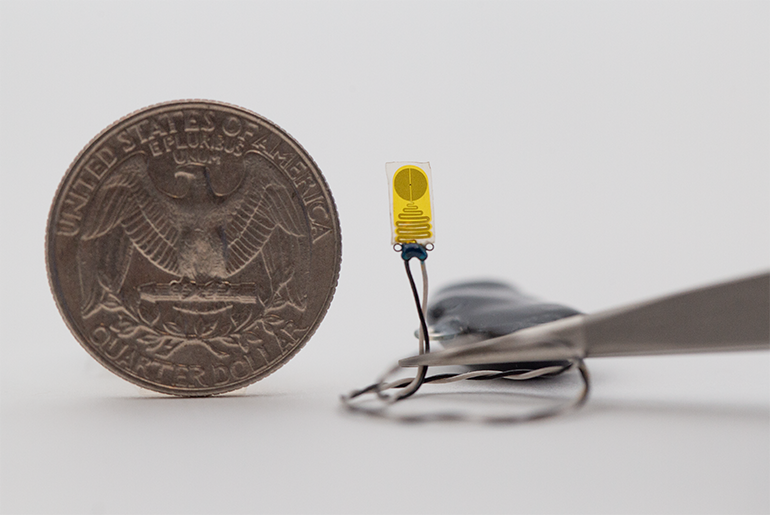Researchers at Northwestern University have developed a sensor that can monitor transplanted organs for signs of rejection. Patients who receive transplants require immunosuppressive medication to ensure that their body does not reject the transplanted tissue, but this can still happen, sometimes years after the initial transplant. Current methods to monitor for immune rejection involve taking biopsies or monitoring blood markers, but these techniques are invasive and blood markers may not show up until the rejection has already progressed somewhat. This new sensor is thin and flexible and is designed to sit on the surface of the transplanted organ, where it monitors changes in temperature very sensitively. A small increase in organ temperature, as detected by the sensors, was found to precede blood biomarkers by as much as three weeks in revealing the emergence of organ rejection.
Organ transplants are a new lease of life for recipients, but this doesn’t mean that they are a walk in the park. Immune rejection is an ever present risk, and can occur months or even years after the initial transplant procedure. “I have noticed many of my patients feel constant anxiety — not knowing if their body is rejecting their transplanted organ or not,” said Lorenzo Gallon, a researcher involved in the study. “They may have waited years for a transplant and then finally received one from a loved one or deceased donor. Then, they spend the rest of their lives worrying about the health of that organ. Our new device could offer some protection, and continuous monitoring could provide reassurance and peace of mind.”
In the case of kidney transplants, which this first iteration of the sensor is designed to monitor, the current procedure with regard to rejection monitoring involves blood draws to monitor for levels of creatinine and blood urea nitrogen levels. These markers serve to illustrate kidney function, but they can become distorted for other unrelated reasons, muddying the water. A biopsy can also be used to assess organ health, but this is highly invasive, takes a while to produce results, and is not something you would wish to perform regularly.
The new sensor is anticipated as a high-tech alternative that a surgeon could install during the transplant procedure. The ultrathin construct is just 200 microns thick and is designed to be slipped under the renal capsule, which keeps it in place and in close contact with the organ surface. It measures temperature very sensitively, with small increases in organ temperature occurring during the inflammation associated with early rejection. The sensor uses Bluetooth wireless connectivity to then alert clinicians.
In tests with rodents with kidney transplants, the device indicated impending kidney rejection as long as three weeks before creatinine and blood urea nitrogen levels increased. This suggests that the system could act as a highly sensitive early warning system for organ rejection.
See a video about the technology below.
Study in journal Science: Implantable bioelectronic systems for early detection of kidney transplant rejection

